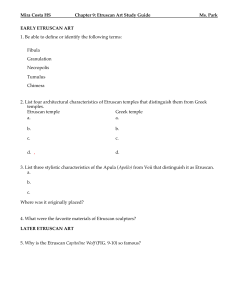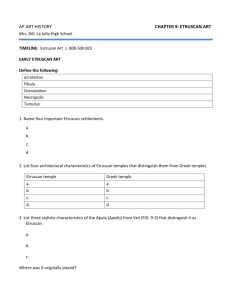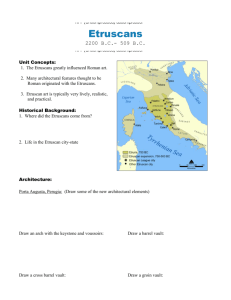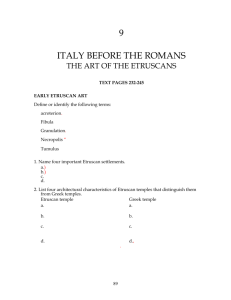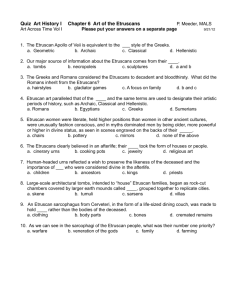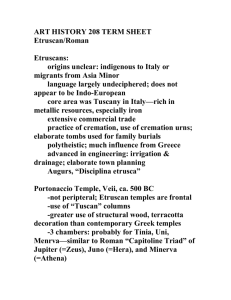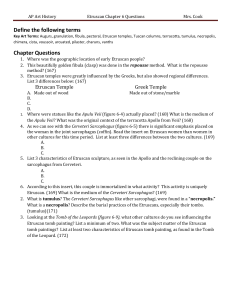chap 9
advertisement
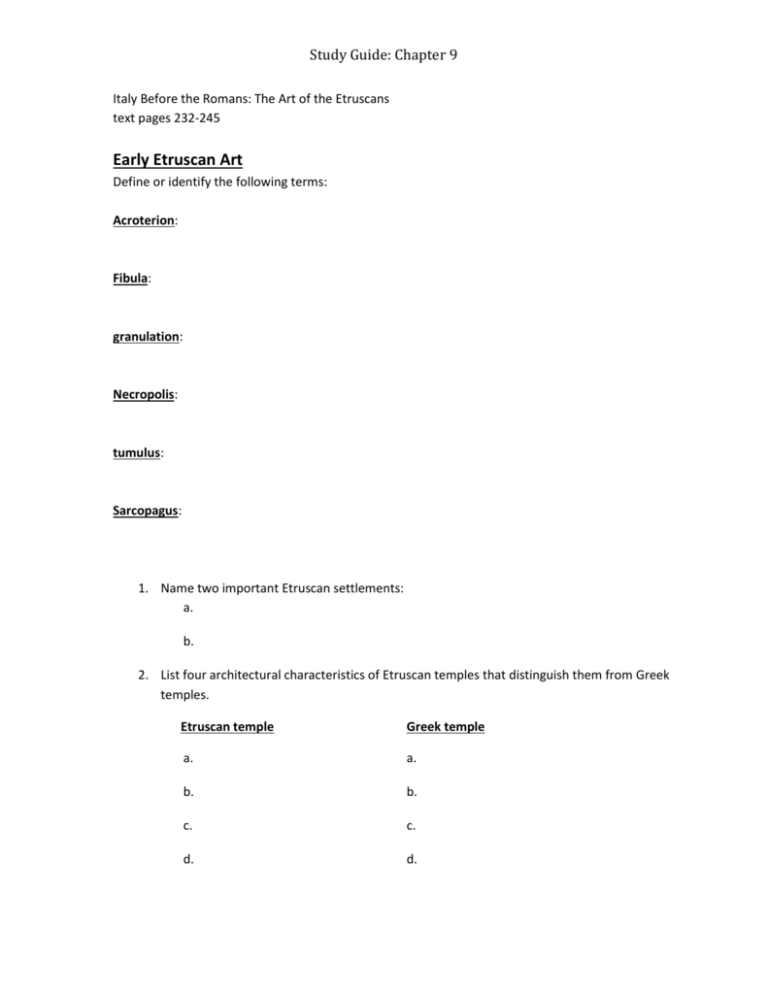
Study Guide: Chapter 9 Italy Before the Romans: The Art of the Etruscans text pages 232-245 Early Etruscan Art Define or identify the following terms: Acroterion: Fibula: granulation: Necropolis: tumulus: Sarcopagus: 1. Name two important Etruscan settlements: a. b. 2. List four architectural characteristics of Etruscan temples that distinguish them from Greek temples. Etruscan temple Greek temple a. a. b. b. c. c. d. d. Study Guide: Chapter 9 3. List three stylistic characteristics of the Apula (Apollo) from Veii (Fig. 9-3) that distinguish it as Etruscan. a. b. c. Where was it originally placed? 4. What were the favorite materials of Etruscan sculptors? 5. How is the Sarcophagus with Reclining Couple (fig 9-4) a stark contrast to Greek art and culture? Later Etruscan Art Define or identify the following terms and understand what they mean for understanding Etruscan art. arcuated gateway: chimera: cista: voussoir: 1. Why is the Etruscan Capitoline Wolf fig 9-10 so famous? 2. Describe the medium and technique used for decorating The Ficoroni Cist fig 9-12. Study Guide: Chapter 9 3. In what way is the sarcophagus of Lars Pulena fig 9-14 different from that of the reclining couple shown in fig 9-4? a. How might the subject on the reliefs relate to the political situation of the Etruscans in the 2nd century BCE? 4. List two features of the magnificent bronze figure of Aule Matele fig 9-15 that show the influence of the Romans. a. b. Looking Carefully and Analyzing Describe the function of a fibula. Study Guide: Chapter 9 Discussion Questions for use in class Pick one of the following questions in class and discuss with a partner. You will get 20 minutes to prepare what you and your partner(s) will share out with the class on your topic. 1. Compare the Apulu (Apollo) from Veii (fig 9-3) with the Riace Warrior (fig 5-34). Explain how the typical Etruscan features of the former contrast with the typical Greek features of the latter. 2. How do the style, color, subject matter, and mood of an Etruscan fresco (fig 9-8) compare with those of a contemporary Greek vase painting (fig 5-56)? 3. In what way was the Etruscan rise and fall from power reflected in the decoration of their tombs? To what degree was it reflected in their bronze work? 4. Compare the Etruscan sarcophagus with the reclining couple on (fig 9-4) and the fresco on fig 98 with the Egyptian funerary monument from Gizeh shown on 3-13 and the Greek funerary stele on 5-55. What do these monuments say about relationships between people in these societies as well as about their ideas towards death? 5. Do you think that Etruscan landscape paintings like the one on fig 9-9 are closer to Egyptian or Minoan paintings? Why? 6. What do art images tell us about the relative positions of Greek and Etruscan women? Select two examples from each culture to illustrate your argument.
